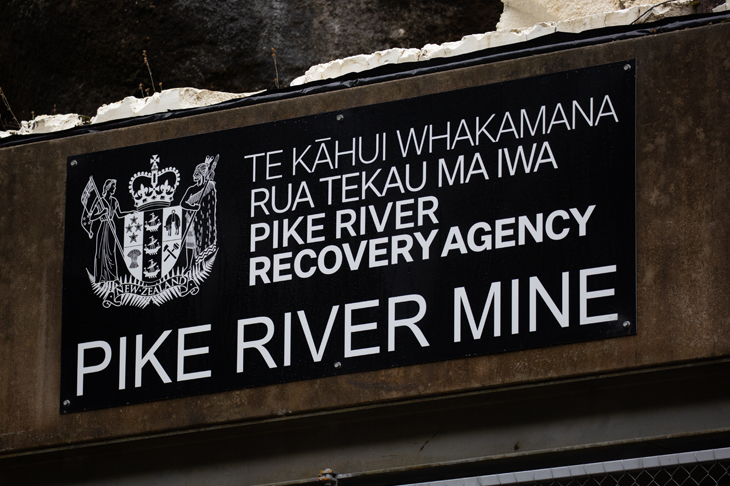Derelict thinking throughout central and local body government and indeed all our management (including academic) areas, is now recognised as having inflicted incalculable damage on Western democracies over the years. So isn’t it time to acknowledge that the over-rule of our bureaucracies, ideologues and hierarchies (we misuse the word elites) has very much underpinned this? American writer Harlan Ellison has ironically observed that ‘The two most common elements in the universe are hydrogen and stupidity.’ And the cult of managerialism now dominates all our institutions, with increasing control over the lives of the individuals to whom every democracy should answer.
There is no doubt that ignoring the threat of increased volcanic activity on New Zealand’s White Island which I reluctantly visited with a scientist friend years ago when it was estimated to be safe (I recall asking when a volcano is ever safe) was a result of poor thinking – with horrific consequences. So far nineteen people have died, with others badly injured. Australians, predominantly, as well as Americans, British, German, Chinese, Malaysian and New Zealanders, including a badly-burnt honeymoon couple with a reportedly livid mother saying her daughter and son-in-law would never have booked the trip if they had known of the risks. So why this shocking decision, which many regard as a consummately stupid one, to allow visitors, leading also to the loss of the life of a well-respected and popular guide who had previously risked his own life to save others?
It brings back reminders of other avoidable tragedies from our recent past – as well as raising questions about the suitability of the police to be regarded as ‘first responders’ – which they failed to be, hanging back while independently, brave individuals, including helicopter pilots, looked for survivors, bringing back some badly injured, undoubtedly saving lives. It took several days for the police to decide to act, to search for and bring back the remaining bodies – ironically when the threat of renewed activity was rising. The prime minister and opposition leader have inevitably noted that questions will need to be asked around recovery and evacuations, although Police Minister Stuart Nash is on record as saying comparisons being made between police handling of the White Island eruption and the 2010 Pike River mining disaster are ‘very unfair’.
With the police in their role then as first responders under the control of a district commander, some locals expressed anger at what they considered the undue cautiousness of rescue teams, noting that in historical accidents, rescue efforts were dominated by fellow miners. Such was the case in 2010 with the brilliant and successful Chilean mine rescue operation conducted predominantly by mine experts. A recent reference to the Pike River tragedy of nearly a decade ago, where only two miners escaped, one carrying his companion up the vertical steps of the only exit available, has renewed questions about its handling by the police, given new knowledge that they destroyed 52 exhibits from around the area after the mine exploded. Moreover, in spite of the promises made by Prime Minister John Key at the time and others later that the bodies of the remaining 29 men caught in the explosion would be recovered, ongoing efforts made over the decade to avoid recovery have led to public suspicion that it may be feared others inside side tunnels might have survived, waiting in vain for a rescue never mounted.
With the now promised opening even further delayed, families are still fighting to stop their dead being left sealed away forever. To date no-one from Pike River Coal and Management Board has ever been prosecuted, even given overwhelming evidence that the mine was a death-trap with safety regulations blatantly ignored – lacking adequate methane monitoring and ventilation and having no requirement to provide a second suitable emergency exit.
Similarly, the collapse of the CHTV building in Christchurch in the 2011 earthquake, which was attributed to inadequacies and defects in the engineering design and resulted in over one hundred deaths, eventually elicited the police response that no one will be held criminally liable. Inevitably the public reaction was of widespread disgust, given a Royal Commission of enquiry’s 2012 findings that the building’s design failed the code requirements of the day and that the man who supervised the building’s construction had faked his engineering degree.
Equally tragically, in 1995, a Department of Conservation West Coast viewing platform on a cliff’s edge, with a 130 feet drop, inadequately buttressed, and merely nailed rather than bolted, led to the death of 14 young polytech students and another four badly injured. Serious deficiencies were subsequently found among other DOC structures. DOC took responsibility for the accident, but there were no prosecutions, as New Zealand law at the time did not permit the Crown to prosecute itself. Since the Cave Creek tragedy, this has been adjusted to ensure that the Building Act covers government departments, and ensure they can be held liable for such negligence in future.
However, arguably the main government department most overdue to be held liable for negligence in this country is the Department of Education, which seemingly has spent decades implementing Gramsci’s agenda of marching through our most hallowed institutions in order to debilitate and ultimately destroy Western democracy. The Marxist infiltration of this ministry, with its determined dumbing-down of our education system, has led to the removal of genuine content in so many important areas, with teachers long fed the Ministry of Education’s propaganda that acquiring genuine knowledge – and learning how to evaluate it – is secondary to merely acquiring skills for the workforce.
The failures in thinking today impacting on many area of our lives, over-controlled by virtually unanswerable and equally infiltrated hierarchies, have not only brought about widespread tragedies, but have become basically an attack on individual freedom – and upon our whole society.
As always, at critical times in any country – as in this especially late hour – its future depends upon the courage of individuals to at last challenge these hierarchies – and upon their determination to win back these freedoms.
Got something to add? Join the discussion and comment below.
Get 10 issues for just $10
Subscribe to The Spectator Australia today for the next 10 magazine issues, plus full online access, for just $10.
You might disagree with half of it, but you’ll enjoy reading all of it. Try your first month for free, then just $2 a week for the remainder of your first year.














Comments
Don't miss out
Join the conversation with other Spectator Australia readers. Subscribe to leave a comment.
SUBSCRIBEAlready a subscriber? Log in